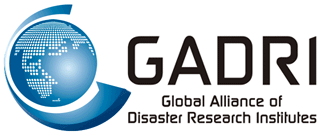- Home
- About
- Events
- Members
- About Members
- Member Institutes
- Algeria
- Argentina
- Australia
- Austria
- Bangladesh
- Brazil
- Bulgaria
- Canada
- China, People's Republic of
- Colombia
- Ecuador
- Egypt
- European Commission
- France
- Germany
- Ghana
- Hong Kong (People's Republic of China)
- India
- Indonesia
- Iran (Islamic Republic of)
- Israel
- Italy
- Japan
- Korea, Republic of
- Lao PDR
- Malaysia
- Mexico
- Morocco
- Nepal
- New Zealand
- Oman
- Phillippines
- Slovakia
- South Africa
- Sri Lanka
- Sudan
- Sweden
- Switzerland
- Chinese Taipei
- Thailand
- Turkey
- United Kingdom
- United States
- Vietnam
- Zimbabwe
- Membership
- Activities
- Resources
- GADRI Archives
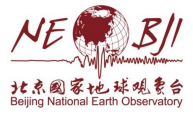 |
Beijing National Earth Observatory, Institute of Geophysics
|
| Outline Beijing National Earth Observatory (NEOBJI) is managed by the Institute of Geophysics (IGP), China Earthquake Administration (CEA), which is an important field arm of IGP and having held a leading role in earthquake and multi-disciplinary geophysical observation in China for many years. NEOBJI has a long glorious history. YEAR_1930. The first seismic station in mainland China, which was installed by Chinese seismologists in 1930. After the Wiechert seismograph and Galitzin-Willip seismograph were deployed, the first seismograph was recorded on Sept.30, 1930. YEAR_1930 to YEAR_1937. 2427 earthquakes were recorded. Bulletins and observation reports were published monthly and the data were exchanged with seismological agencies all over the world, which makes NEOBJT as a landmark of the modern seismological observation in China. YEAR_1957. Renamed as Beijing Observatory, and obtained earthquake waveform data since June.1, 1957, with the installed 513-type mid-strong seismometer. The geomagnetism records was first obtained in 1957. YEAR_1982. A 202m-depth cave for geophysical observation was completed with total inner length of 317.5m. Year_1982 to Year_2010. Seismometers, a gravimeter, and tilt-meters were installed in the cave, while geo-magnetometers and instruments for water level were installed in the yard and down in boreholes. YEAR_1984. Be awarded the "International Earth Observation Centenary" Silver Medal by IAGA in recognition of the outstanding contribution in Geomagnetic Observation.[detail] --> |
|
 |
State Key Laboratory of Geo-hazards Prevention and
|
|
Outline It was recognized as the Key Laboratory of Sichuan Province by the local government in 2001. And one year later, it was developed as the State Key Laboratory Base, which was under the joint construction of Ministry of Science and Technology and Sichuan Province. In 2003, it became Key Laboratory of the Ministry of Land and Resources. Upgraded to a State Key Laboratory by the Ministry of Science and Technology in 2007, SKLGP now is an exclusive laboratory in the field of geohazard prevention in China. The present director of SKLGP academic committee is Academician Wang Sijing from Chinese Academy of Engineering, and Professor Huang Runqiu is in charge of the laboratory. Targeted at the applied basic research of geohazard prevention and geoenvironment protection, SKLGP provides theories and technologies for natural disaster prevention and the state major projects. With its orientation, SKLGP integrates the generation background, forming mechanism, early identification, monitoring and early warning of serious geological disasters, which are either induced by nature or human activities, as well as the theories and methods of project management, forming a first-tier research centre, which combines applied basic research, the development and promotion of advanced technologies, the education of talents with international communication and cooperation, in a comprehensive way to support the national objective of geohazard prevention and geoenvironment protection theoretically and technologically. With 60 years of state key discipline "geological engineering" development in Chengdu University of Technology, four research directions have been established in SKLGP under the combination of discipline frontier and key problems. They are: 1) serious geohazard assessment and prevention, 2) crossfeed action between human activities and geoenvironment and disaster control, 3) regional geoenvironment evaluation and protection, 4) geohazard monitoring and early warning and geoinformation systems. In recent ten years, SKLGP has conducted nearly 1200 national and provincial research projects, solving series of theoretical and technological obstacles in geohazard prevention and major state projects. The research subjects involves geoenvironment protection and geohazard prevention, water resources and hydropower development, highway, railway, civil aviation airport construction, urban subway and development of high-rise building, etc. Through the implementation of the research projects, excellent results have been achieved: 3 first prizes and 2 second prizes of National Science and Technology Progress Award, 1 prize of China International Science and Technology Cooperation Award, 1 prize of Gold Medal of National Patent Achievement. And over 60 projects were awarded at ministerial or provincial level. More than 50 monographs and text books and over 3000 papers have been published in home and abroad. The total economic benefits of the projects have reached billions of yuan. [detail] --> |
|
 |
Key Laboratory of Coastal Disaster and Defence (KLCDD), Hohai UniversityNanjing |
| Outline The Key Laboratory of Coastal Disaster and Defence (KLCDD) at Hohai University was founded by Ministry of Education, China in 2005, and consequently passed the government assessment in 2008. The laboratory operates on the policy that the director takes the full responsibility of administration under the supervision of academic committee, and it heavily relies on broader national and international collaborations for cross-disciplinary integrations. The main objective of the KLCDD is to explore and develop new ideas, new approaches and new technologies for making the coastal environments more resilient to the impacts of natural hazards and human induced threats. The research activities in the KLCDD are mainly related to coastal disaster and defence, including the mechanisms of generation and development, prediction methods and warning systems, reduction and protection technologies, and evaluation and management of coastal disaster. The laboratory has particular interests in the areas of sea level rise and its impact, formation and propagation of storm surge and tsunami, saltwater intrusion in estuary, warning technology of storm surge, coastal dynamics of disaster process and its induced sediment transport, prediction of change of environmental factors in coast and estuary, design criteria of protection engineering, innovative technologies for protection engineering, damage assessment and recovery measures of protection engineering, the impact evaluation of coastal disaster on ecological environment and social economy and countermeasures [detail] --> |
|
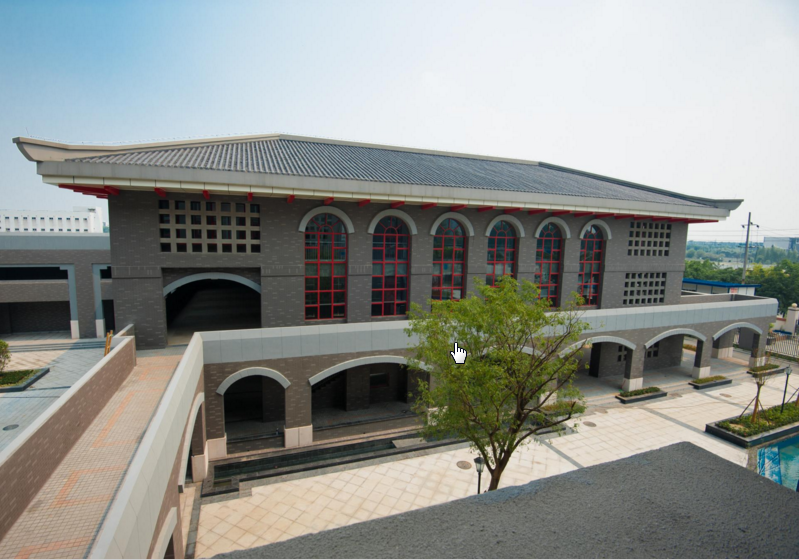 |
Institute for Disaster Management and Reconstruction (DMR)
|
|
Outline The Hong Kong Polytechnic University and Sichuan University jointly set up China's first "Institute for Disaster Management and Reconstruction" (IDMR) after two deadly earthquakes struck the province in five years. The Institute for Disaster Management and Reconstruction was jointly established this month by Polytechnic University and Sichuan University to support the province's reconstruction and development. The Institute is first of its kind on " disaster preparedness, disaster risk reduction and disaster reconstruction" on Chinese Mainland.. The IDMR is situated at SCU Jiang An Campus. It covers an area of 20,000 square meters and encompasses six laboratories and one disaster data base and resource center.
|
|
College of Engineering, Ocean University of ChinaQingdao |
|
| Outline College of Engineering was founded in 1993, whose predecessor is Department of Ocean Engineering established in1983. It is a domestic well-known engineering faculty with distinctive feature of Ocean Engineering. In recent years, aiming at academic excellence and benefiting society, our college has made remarkable achievements in disciplinary development, education, research and social service. As one of the most dynamic colleges, we are striving for prosperous future in conformity with national mid-long development planning.
[detail] --> |
|
 |
College of Architecture and Environment
|
|
Outline Up to now, the college has integrated various disciplines including engineering mechanics, civil engineering, environmental science, architecture, planning and garden engineering. It's characterized by its strong strength of technology& engineering combined with humanity, science with art, research with practice and teaching with innovation. It serves as an international frontrunner in scientific research, and also endeavours to boost local economic development in social services. With 4 Doctor's degree authorization centres of first-level discipline, 7 Master's degree authorization centres of first-level discipline, 3 Professional Master's degree authorization centres and 10 Undergraduate degree programmes, the college has become a well-known fostering base for highly specialized talents in engineering mechanics, civil engineering, architecture, environmental protection, etc. In more than 20 years, the college has delivered more than 1550 graduates of PhD and master degree and over 6000 undergraduates. A number of the graduates have developed into leaders of their fields and backbones of enterprises and public institutions. The running principle of the college is "scholarship-based, teaching-led self-discipline and social commitment for bigger accomplishment with serenity of mind". The aim of the college is to cultivate a pool of talents with independent thinking and innovative spirits; teaching staff with academic enthusiasm, enriched mind and exemplary behaviour; a scholar group with distinctive characteristics, close synergy and significant influence. It will grasp every opportunity to accelerate the healthy, harmonious and sustainable development of the college. We sincerely invite students and outstanding scholars from all over the world to study or teach here. The members of the college are striving to construct a world-class academic institution, together with friends from all sectors of the society.[detail] --> |
|
 |
State Key Laboratory of Hydraulics and
|
|
Outline Authorized by National Planning Board (NPB) in May 1988, the State Key Laboratory of Hydraulics and Mountain River Engineering became the first approved State Key Laboratory in hydraulic engineering field.
Since 1952, the discipline of Hydraulics and River Dynamics has been selected as the key construction disciplines in Sichuan University, and then it was selected for the first batch of doctoral program in China in 1981 before it was approved firstly as the state key disciplines of hydraulics in China in 1988. Furthermore, it is approved as the first batch of Chang Jiang Scholars Program in 1998. Then, in 2000 hydraulic engineering discipline becomes the first-level discipline awarding doctoral degree. Moreover, in 2005, basing on the laboratory, the construction of the 1985 Project" Technology Innovation Class I platform was approved by the Ministry of Education. Up to now, the Laboratory has three state key disciplines (Hydraulics and River Dynamics, Geotechnical Engineering and Solid Mechanics), three first-level disciplines awarding doctoral degree (Hydraulic Engineering, Mechanics, Environmental Science and Engineering) and three doctoral programs (Geotechnical Engineering, Structural Engineering and Ecology). [detail] --> |
|
 |
China Research Center for Emergency Management (CCEM), Wuhan University of TechnologyHubei Province |
| Outline China Research Center for Emergency Management of Wuhan University of Technology(hereinafter referred to as The center) was established in December 2005. Its predecessor is Crisis and Disaster Research Center of Wuhan University of Technology. It is the first research institution engaging in public security and emergency management during domestic colleges and Universities. In October 2007, Hubei Provincial Department of Education formally approved The Center to construct and operate as "The Key Research Base for Humanities and Social Sciences of Universities of Hubei Province"; In 2004, authorized by the People's Government of Hubei Province, " Hubei Collaborative Innovation Center for Early Warning and Emergency Response Technology " was established by the uinon of 28 government functional departments, cities, universities, research institutes and large enterprises. The members of scientific research team of The Center come from University of South Australia, City University of Hong Kong, University of Science & Technology of China, Huazhong University of Science and Technology, Wuhan University, Wuhan University of Technology and other well-known colleges and universities. With more than 700 square meters of research site and 2,000 square meters of Visualized Simulation and Analog Laboratory, more than 3,000 copies of professional books, journals and scientific material to meet the needs of scientific research, personnel training and social services, etc., The Center has the abundant power and superior conditions for scientific research. On the basis of national demand, The Center conducts the identification, description, formation and evolution mechanism, development trend analysis and potential risk degree evaluation, precautionary measures and emergency management, the theory of strategic decision, methods and key supporting technologies research of unconventional and non-traditional security problem, and devote to create an international leading, multi-interdisciplinary and innovative research base of public safety and emergency management. According to the medium and long term development plan (2006-2020) of Wuhan University of Technology, as the key research base of Hubei Province, the "Crisis and Disaster Research Center for Emergency Management of Hubei Province" will be constructed into the National Key Research Base for Humanities and Social Science , by gathering the internal and external dominant resources of university. [detail] --> |
|
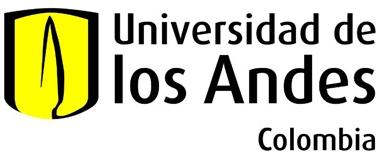 |
Universidad de los AndesBogotá |
| Outline Universidad de los Andes is an autonomous, independent, and innovative institution that fosters pluralism, tolerance, and respect for ideas. It aims for academic excellence while providing rigorous critical and ethical character development, in order to enhance in all students the awareness of their social and citizenship responsibilities, as well as a firm commitment to the society. The university's student body, in an environment of interdisciplinary and flexible integral character development, becomes the chief agent of the educational process. A highly skilled, knowledgeable, and prestigious faculty facilitates the development of an outstanding academic and professional life project that supports research, contributes to the development of the country, and transcends its geographical boundaries. [detail] -->
|
|
 |
National Unit for Disaster Risk Management in Colombia (NGRD)
|
| Outline We are the unit that directs, guides and coordinates Risk Management Disaster in Colombia, strengthening the capacities of public, private, community organizations and society in general, with the explicit purpose of contributing to improving the quality of life of people and sustainable development through knowledge risk reduction and management of disasters associated with natural phenomena, socio-natural, technological and human unintentional. It is expected, by 2017 the Unit will have achieved empower national and international authorities, public or private entities and society in general about their responsibility for managing disaster risk is concerned, promoting social participation in monitoring institutional performance, promoting optimal use of technology in the field and significantly reducing risk conditions, loss of lives and costs associated with disasters. [detail] --> |
|
 |
Pacific International Center for Disaster Risk Reduction (PIC-DRR)
|
| Outline The center is located in Guayaquil, Ecuador at ESPOL (Polytechnic University). It was created on February 2017. The PIC-DRR works with two of Sendai Framework of Action priorities: Priority 1: Understanding disaster risk. Priority 2: Strengthening disaster risk governance to manage disaster risk. PIC-DRR first focus is on supporting research for Resilience Cities in Ecuador. Currently, it has one proposal submitted for working with a small size municipality in Ecuador and is working on proposal development for other municipalities and also for doing the Country Risk Study for the Ecuadorian government Insurance Company The challenges facing are mainly to turn scientific results into policy making and policy implementation. The PIC-DRR gathers researchers from many disciplines: earth sciences, social sciences and policy-making[detail] --> |
|
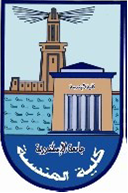 |
Faculty of Engineering, Alexandria University
|
| Outline Faculty of Engineering was established at the University of King Fuad I (Cairo) in the beginning of the academic year 1942-1941. Its branch in Alexandria for the preparatory class was in Arts and Crafts school at ElShatbi. A year later, a decree of establishing the University of King Farouk I was issued and this section became the starting point of Faculty of Engineering. Studying began in the Faculty in the academic year 1942-1943 AD for preparatory and freshman of 169 students, with no female students included. Then, establishing the department began by departments of Architecture, Civil Engineering, Mechanical Engineering and Electrical Engineering. The first class graduated at the end of the academic year 1945-1946 of 50-Bachelor students and only one post graduate student. The number of staff members, assistant lecturers and demonstrators was about 1279 with 13895 registered students in the academic year 2012-2013. The number of alumni in the academic year 2012-2013 is 2316 alumni of all specializations who will be added to more than 60,000 graduated alumni since 1946. [detail] --> |
|
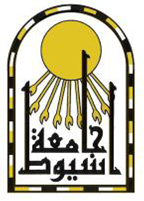 |
Geology Department, Faculty of Science, Assiut UniversityAssiut |
| Outline Assiut University was founded and established in October 1957 as the first university in Upper Egypt. In Upper Egypt, Assiut University has pioneered in preparing highly qualified graduates with the basic specialized academic knowledge and training expertise on the various necessary skills. Besides, the university offers an abundance of programs complying with the contemporary world changes. The university structure involves 16 faculties and 3 institutes. Geology Department is one of the oldest Departments in the University. It comprises 58 Staff members, 35 administrative and assistant capacity, 229 undergraduate students and over 30 graduate students. The Department has main missions that focus on education and research. Because Protection of the environment is needed due to various human activities and Environmental protection is influenced by three factors: environmental legislation, ethics and education. Each of these factors plays its part in influencing national-level environmental decisions and personal-level environmental values and behaviors. The Geology Department now offers courses, such as environmental studies, environmental management, environmental engineering, hazards prevention and/or mitigation that teach the history and methods of environment protection. [detail] --> |
|
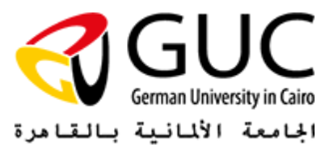 |
German University in Cairo (GUC)New Cairo City |
| Outline Building a leading centre of excellence in teaching and research that will effectively contribute to the general welfare nationally and internationally and endeavour the scientific, technical, economic and cultural cooperation between Egypt and Germany. The German University in Cairo, GUC, is an Egyptian Private University founded by the presidential decree 27/2002, according to the law number 101/1992 and its executive regulations number 355/1996. German university in Cairo/Deutsche Universität in Kairo is established in cooperation with the State Universities of Ulm and Stuttgart, under the patronage of the Egyptian Ministry of Higher Education, the Ministry of Science, Research and Arts, State of Baden- Württemberg, Germany, and supported by the German Academic Exchange Service (DAAD), the German Embassy in Cairo, the Arab/German Chamber of Industry and Commerce (AHK), the Federal Ministry of Education and Research, Germany, The State University of Tübingen and The State University of Mannheim. [detail] --> |
|
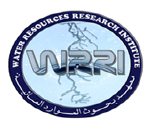 |
Water Resources Research Institute (WRRI), National Water Research Center(NWRC), Ministry of Water Resources and IrrigationEl-Khairiya |
| Outline The Water Resources Research Institute (WRRI) is one of twelve research institutes comprising the National Water Research Center (NWRC) of the Ministry of Water Resources and Irrigation (MWRI). It is located on the campus of the NWRC in El Qanater El khairiya, 25 km North of Cairo a short distance downstream the Delta Barrage overlooking Damietta Branch of the Nile. WRRI is pioneer in the fields of, Wadi hydrology studies, flash floods risks, the Nile River basin studies, groundwater development, and integrated water resources management. In addition, to plan and design appropriate projects for flood protection works, taking into account economic, environmental and social dimensions. WRRI is keen to engage innovative researches that enhance understanding of integrated Water Resources Management, and to implement effective strategies to address the barriers that have prevented full participation of women and stakeholders in projects. WRRI strives to maintain high standards of competence in its work. Vision: Making the WRRI a leader organization conducting cutting-edge research in water resources. Mission: To conduct, coordinate and integrate multi-disciplinary research to address critical national and regional priorities (Arab and Nile Basin Countries) in water resources. [detail] --> |
|
Bureau de Recherches Geologiques et Minieres (BRGM) Orléans Cedex |
|
| Outline BRGM is France's reference public institution for Earth Science applications in the management of surface and subsurface resources and risks. BRGM ("Bureau de Recherches Géologiques et Minières") is the French Geological Survey. The key objectives for BRGM are: i) Understanding geological processes and associated risks; ii) Developing new methodologies and techniques helpful in geosciences; iii) Producing and disseminating data to support the management of soils, subsoils and resources; iv) Delivering the necessary tools for the management of soils, subsoils and their resources, for risk prevention and for policy responses to climate change. BRGM's activities are organized around its 5 key roles: scientific research; support to public policy development; international cooperation; mine Safety and training through "ENAG" school. Scientific research at the BRGM is focused on furthering geological knowledge and understanding surface and subsurface phenomena. The key issue at stake is to meet the challenges of global change. Over 700 BRGM engineers and researchers - two thirds of its staff - are involved in scientific research. Support to public policy development covers all expert appraisals, monitoring and studies such as: surface/subsurface monitoring and disseminating knowledge; methodological studies and synopses to transfer research results to "civil society"; independent expert appraisals; and training or knowledge transfer. International cooperation is also one of the major roles: with over 200 projects each year in more than 40 countries, BRGM works across the globe towards enduring protection for people and resources. BRGM provides know-how and expertise in two main areas: i) protecting people and their environment against natural risks; ii) ensuring the permanence and quality of natural water, mineral and (geothermal) energy resources. Mine Safety, since 2006, has been entrusted to BRGM by the French State. Monitoring and action to prevent risks and pollution arising from mine closures are part of BRGM's missions. BRGM has state delegated responsibility for all mine safety engineering work. Through ENAG, the BRGM disseminates its scientific competences and techniques through a range of courses: higher education diploma courses in the geosciences, through training support and partnerships with higher education establishments; continuing professional training, through some sixty introductory and advanced courses in all geosciences fields.[detail] --> |
|
 |
European and Mediterranean Major Hazards Agreement
|
| Outline An international organisation in Strasbourg which comprises 47 countries of Europe. It was set up to promote democracy and protect human rights and the rule of law in Europe. The EU currently has 28 members that have delegated some of their sovereignty so that decisions on specific matters of joint interest can be made democratically at European level. No country has ever joined the EU without first belonging to the Council of Europe. EUR-OPA Major Hazards Agreement is a platform for co-operation in the field of major natural and technological disasters. Its field of competence covers the major natural and technological disasters - knowledge, prevention, risk management, post-crisis analysis and rehabilitation.
[detail] --> |
|
 |
Center for Disaster Management and Risk Reduction Technology (CEDIM) Eggenstein-Leopoldshafen |
| Outline The Center for Disaster Management and Risk Reduction Technology (CEDIM) is an interdisciplinary research center of the Karlsruhe Institute of Technology (KIT). CEDIM operates under the leadership and direction of the directorate, coordinator and deputy coordinator. The coordinating committee meets regularly to oversee CEDIM's conceptual and personal planning. The advisory board is a group of external advisers in the field of disaster management. In late 2011, CEDIM embarked on a new style of disaster research known as Forensic Disaster Analysis. In the new research program CEDIM Forensic Disaster Analysis (CEDIM FDA) CEDIM researchers will analyse disasters and their impact in near real-time. The core of CEDIM's new style of analysis is to examine disasters in an interdisciplinary manner with a focus on the complex interactions between (1) the natural hazard, (2) the technical installations, facilities, and infrastructures, and (3) the societal structures, institutions and capacities. In the years before, CEDIM's research activities were devoted to several projects and research groups. Between 2003 and 2008 the focus of CEDIM research was on three pojects: Riskmap Germany, Megacity Instanbul, and Modelling of extreme flooding events. The main goal in the first CEDIM project, the Riskmap Germany, was to conduct an area-wide quantification of natural hazards and man-made hazards in Germany risks. For each community, the natural hazard that is likely to cause the highest damage was identified. The Megacity Istanbul project was an interdisciplinary project to analyze the consequences of earthquakes in rapidly growing metropolitan areas. The aim of the research project modeling extreme floodevents was the development of a modeling system to quantify risks of extreme flooding in large river basins. In the system, computer models and modules are coupled together to simulate the functional chain: hydrology - hydraulics - polder diversion - dyke failure - flooding - damage estimate - risk assessment. [detail] --> |
|
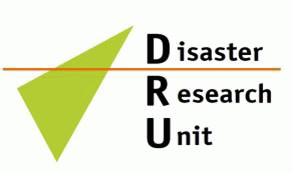 |
Disaster Research Unit (DRU), Department of Social and Political Sciences
|
| Outline The Disaster Research Unit (DRU) of the Freie Universität Berlin is a sociological and ethnological research institution specialising in interdisciplinary research into disasters. The DRU's body of work encompasses the entire "disaster cycle": from its inception, its progression, into its after-math and the associated reconstruction and coping. This research topically breaks down into risk perception, risk reduction, disaster prevention, preparation, warning and disaster behaviour, all the way to disaster coping and sustainable reconstruction for industrialised nations as well as the so-called "Global South". In addition to this, the DRU engages in social scientific and humanities basic research alongside other applied research and consulting. In all of this, the cultural and social aspects form the core pillar of the DRUs work. As the DRU maintains, disasters must be considered and understood within their cultural and societal contexts. For example, extreme weather situations only become risks when they collide with societal and cultural understandings, behaviours, and institutions. |
|
 |
Institute for Advanced Sustainability Studies (IASS)Potsdam |
| Outline The Institute for Advanced Sustainability Studies (IASS) conducts research with the goal of identifying, advancing, and guiding transformation processes towards sustainable societies. Its research practice is transdisciplinary, transformative, and co-creative. The institute cooperates with partners in academia, political institutions, administrations, civil society, and the business community to understand sustainability challenges and generate potential solutions. We live in an age of constant, rapid change. A person born in the early twentieth century would be overwhelmed by the complexities of modern-day life. Electric motors, the Internet, computers, jet aircraft, and robots are among the many side effects that have accompanied this evolution. While we experience many of these developments as passive observers, others are planned and promoted purposefully by individuals and societies. These developments are referred to as 'transformations'. |
|
